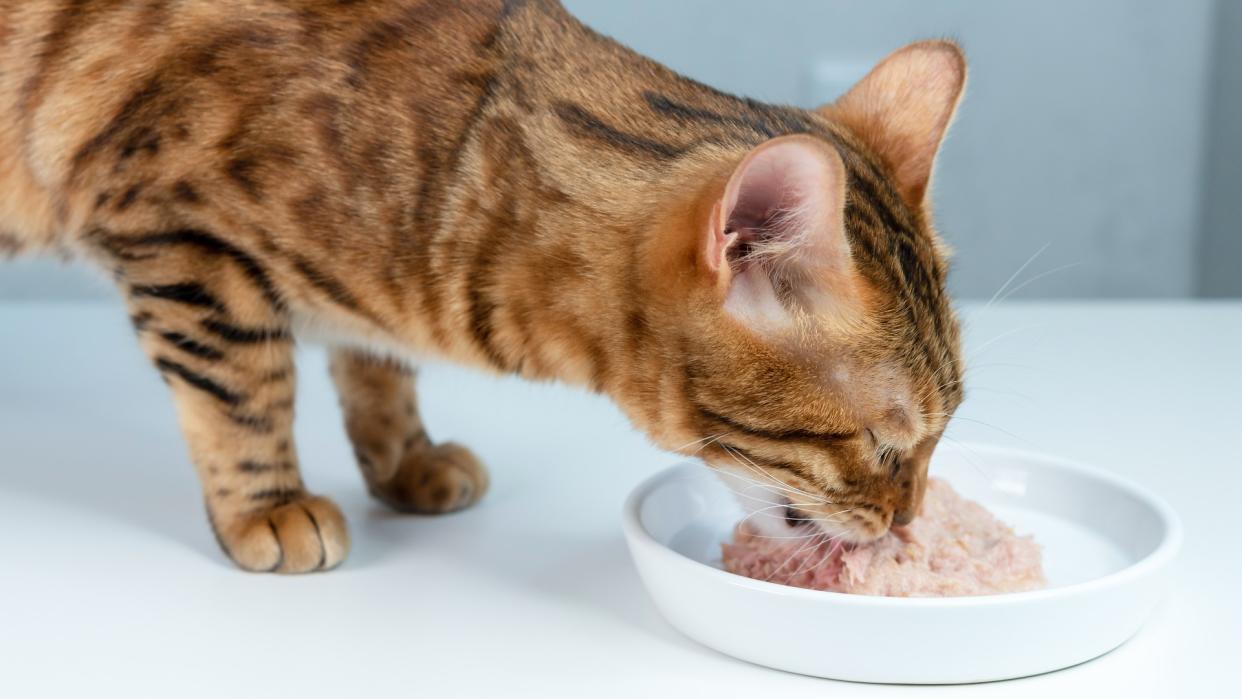Is wet food bad for cats? A vet weighs in

If you're considering a diet change for your cat, you may be wondering, “is wet food bad for cats?” The truth is that there are advantages to the best wet cat food and advantages to the best dry cat food. Each food type has its own unique pros and cons.
Wet cat food is a healthy option for many cats. If your cat has a history of kidney disease or urinary tract disease, wet cat food may even be recommended by your veterinarian as a better option than dry cat food. Wet food promotes hydration, which can decrease the strain on certain body systems, such as the kidneys and bladder.
However, there are potential drawbacks to wet cat food. This food doesn’t remain fresh when left out at room temperature, so you will need to meal-feed your cat. If you work long hours or travel frequently, this may be challenging. Additionally, some cats are reluctant to eat wet cat food if they have grown up eating dry food, due to the difference in texture.
Before making any changes to your cat’s food, it's important to understand the pros and cons of any cat food. Research food brands carefully and talk to your veterinarian to learn whether your cat has any specific health factors that suggest a need for one food type over another. Read on to learn more about wet cat foods and whether this type of food may benefit your cat.
Benefits of wet food for cats
There are several benefits to feeding wet food to your cat. One of the biggest benefits is that wet food has a very high moisture content, making it the best cat food when it comes to helping your cat stay hydrated. This is especially important for senior cats and those with certain medical conditions, such as kidney disease or urinary problems. It can be difficult to convince a cat to drink more water, so transitioning to a canned food diet is an easy way to increase your cat’s daily water intake and improve overall hydration.
In addition to being high in moisture, wet food diets also tend to be lower in calories than an equal volume of dry cat food. Wet food diets are also higher in protein and lower in carbohydrates than dry food diets, which can help to maintain a lean body mass. For cats that need to lose weight, a wet food diet can be particularly helpful in this process.
Disadvantages of wet food for cats
The biggest disadvantage to feeding wet food to your cat is that it is messy and requires more clean up compared to the best dry cat food. Wet food also should not be left out for long periods of time as it will quickly spoil and begin to grow bacteria, which is unhealthy and unappetizing for your cat. After opening a can of wet food, it should not sit out for more than 20 minutes before being refrigerated.
Because wet food is lower in calories than dry food, you’ll also need to feed more of it to make up your cat’s daily calorie intake. This can quickly become more expensive than feeding dry food, which is why many pet owners choose to feed some dry in addition to wet food.
Does wet food cause dental disease?

A common misconception is that dry food is better for a cat’s teeth than wet food. We now know that this is not the case! Unless you are feeding a prescription veterinary dental diet, the type of food you provide for your cat has little to no impact on his or her teeth. The propensity to develop dental disease is influenced far more by factors such as genetics, conformation, and your home dental care routine. The best way to prevent dental disease for your cat is by brushing his or her teeth daily. This practice removes food particles and prevents plaque buildup. If you are unable to brush your cat’s teeth daily, doing so at least a few times a week is still beneficial.
Is wet food too rich for cats?
Another common misconception is that wet food is “too rich” and will cause an upset stomach or diarrhea if fed to your cat. While there are certainly some cats who may not be able to tolerate certain wet foods due to food allergies, inflammatory bowel disease, or other gastrointestinal illnesses, in general wet food is easily digestible for most cats.
If you’re concerned about your cat’s ability to tolerate a wet food diet, start slowly and offer only small amounts of wet food at a time until you have had a chance to see how your cat reacts to it. If your cat’s stools are normal and there has been no change in his or her appetite or energy level, then it is okay to gradually offer larger portions of wet food until you reach your desired portion size.
How to choose a wet cat food
There are many factors to consider when choosing a wet food for your cat. First, you’ll need to find a wet food that is appropriate for your cat’s species and life stage. Check the back of the can for the AAFCO Statement (US) or the Statutory Statement (UK) which should say something like “for the maintenance of adult cats” or “for growing kittens”.
You’ll also want to ensure that the wet food you choose is from a reputable company, which you can do by utilizing the World Small Animal Veterinary Association’s guidelines on selecting pet foods or by asking your veterinarian for a product recommendation. For more information on how to select a pet food, you can learn how to read a pet food label or check out the recommendations from board certified veterinary nutritionists.
Want to learn more? Find out is dry cat food best? Or how to stop a cat from spilling its water bowl.

